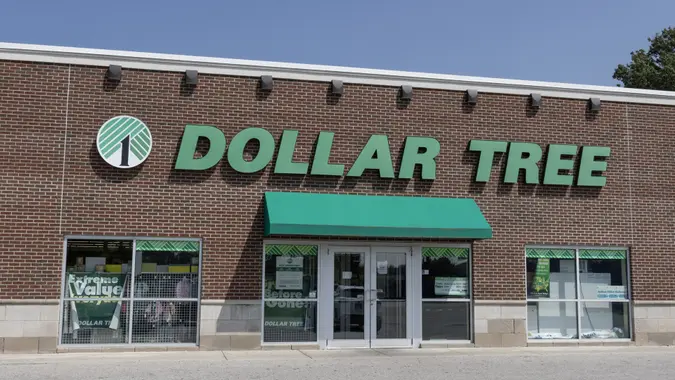Why Buy Now, Pay Later Is Never A Good Idea

Commitment to Our Readers
GOBankingRates' editorial team is committed to bringing you unbiased reviews and information. We use data-driven methodologies to evaluate financial products and services - our reviews and ratings are not influenced by advertisers. You can read more about our editorial guidelines and our products and services review methodology.

20 Years
Helping You Live Richer

Reviewed
by Experts

Trusted by
Millions of Readers
In an era of instant gratification, “Buy Now, Pay Later” (BNPL) schemes have surged in popularity, offering consumers the allure of acquiring goods immediately without the immediate financial burden. While tempting, these arrangements often lead to a precarious financial path.
Adobe Analytics reports that since the beginning of November 2023, Buy Now, Pay Later (BNPL) options have driven $10.1 billion in online sales, marking a 17% increase from the previous year. The Financial Times highlights the rising popularity of such payment methods in the U.S., correlating with a decrease in household savings and a dip in consumer confidence to its lowest point in six months. Additionally, BNPL schemes have been instrumental in assisting consumers in managing the impact of rising prices.
“We are in an environment where things cost more, so it’s somewhat predictable that consumers can get into situations that can quickly spiral into unaffordable debt burdens,” Delicia Reynolds Hand, director of financial fairness advocacy at Consumer Reports, said to Financial Times.
Here’s why embracing the traditional route of saving before purchasing is a wiser choice.
The Illusion of Affordability
BNPL schemes can distort one’s perception of affordability. They break down a large purchase into seemingly manageable installments, but this can lead to overspending. Consumers often buy more than they can afford, underestimating their future financial obligations.
Debt Accumulation
Each BNPL commitment is essentially a debt. Multiple BNPL purchases can result in a web of repayments, making it difficult to track and manage finances. This debt accumulation can quickly become overwhelming, especially if there’s a change in your financial circumstances.
Interest and Fee
While some BNPL plans offer interest-free periods, failing to meet repayment deadlines can lead to hefty interest charges and late fees. These additional costs can turn an affordable purchase into an expensive debt.
Credit Score Impact
Non-payment or late payments can adversely affect your credit score. A lower credit score can have long-term consequences, such as reduced access to traditional credit facilities and higher interest rates on loans.
Impulse Buying Temptation
BNPL schemes can encourage impulse buying. The ease of completing a transaction without immediate financial repercussions can lead to hasty, ill-considered purchases, often on non-essential items.
Lack of Consumer Protections
Traditional credit purchases often come with consumer protections, including warranties, returns, and refunds. BNPL arrangements may not offer these safeguards, leaving buyers vulnerable.
Budgeting Challenges
Regular BNPL payments can disrupt your budgeting. The commitment to future payments reduces your monthly disposable income, limiting your capacity to save or invest.
Psychological Stress
Owing money, especially across various platforms, can create stress and anxiety. The constant worry about meeting payment deadlines can take a toll on your mental health.
Encourages Bad Financial Habits
Relying on BNPL for purchases can foster poor financial habits. It bypasses the discipline of saving and planning for purchases, essential skills for long-term financial health.
Potential for a Debt Trap
In the worst-case scenario, failing to keep up with BNPL payments can lead to a debt trap. This situation occurs when new debts are incurred to pay off existing ones, leading to a cycle of borrowing that can be hard to break.
Conclusion
While Buy Now, Pay Later offers immediate satisfaction, its long-term financial implications can be detrimental. It promotes a culture of debt rather than saving, leading to potential financial instability. Embracing traditional saving methods may require patience, but it fosters financial discipline, minimizes risk, and ultimately leads to a healthier financial future.
Editor's note: This article was produced via automated technology and then fine-tuned and verified for accuracy by a member of GOBankingRates' editorial team.
More From GOBankingRates
 Written by
Written by  Edited by
Edited by 























